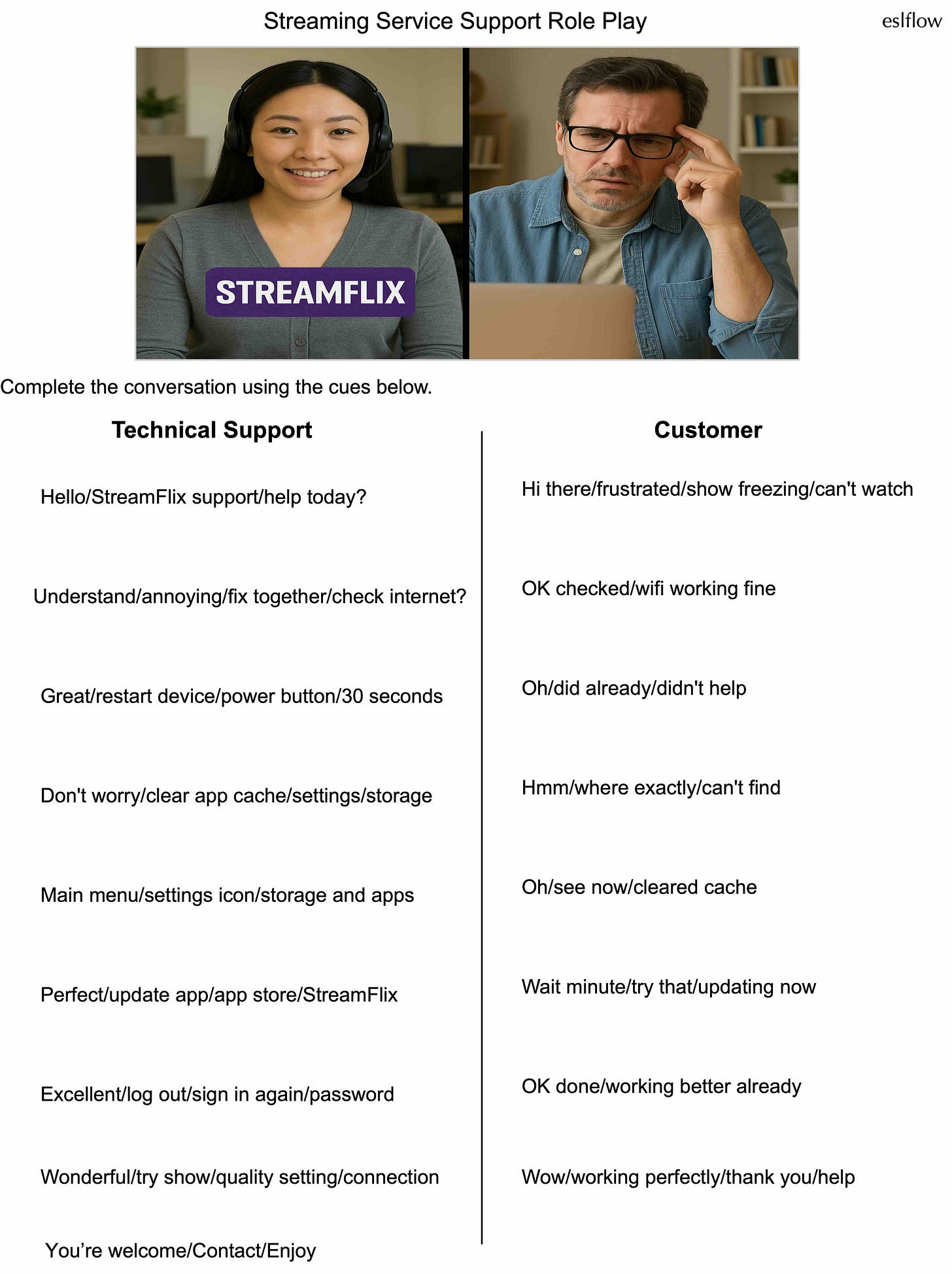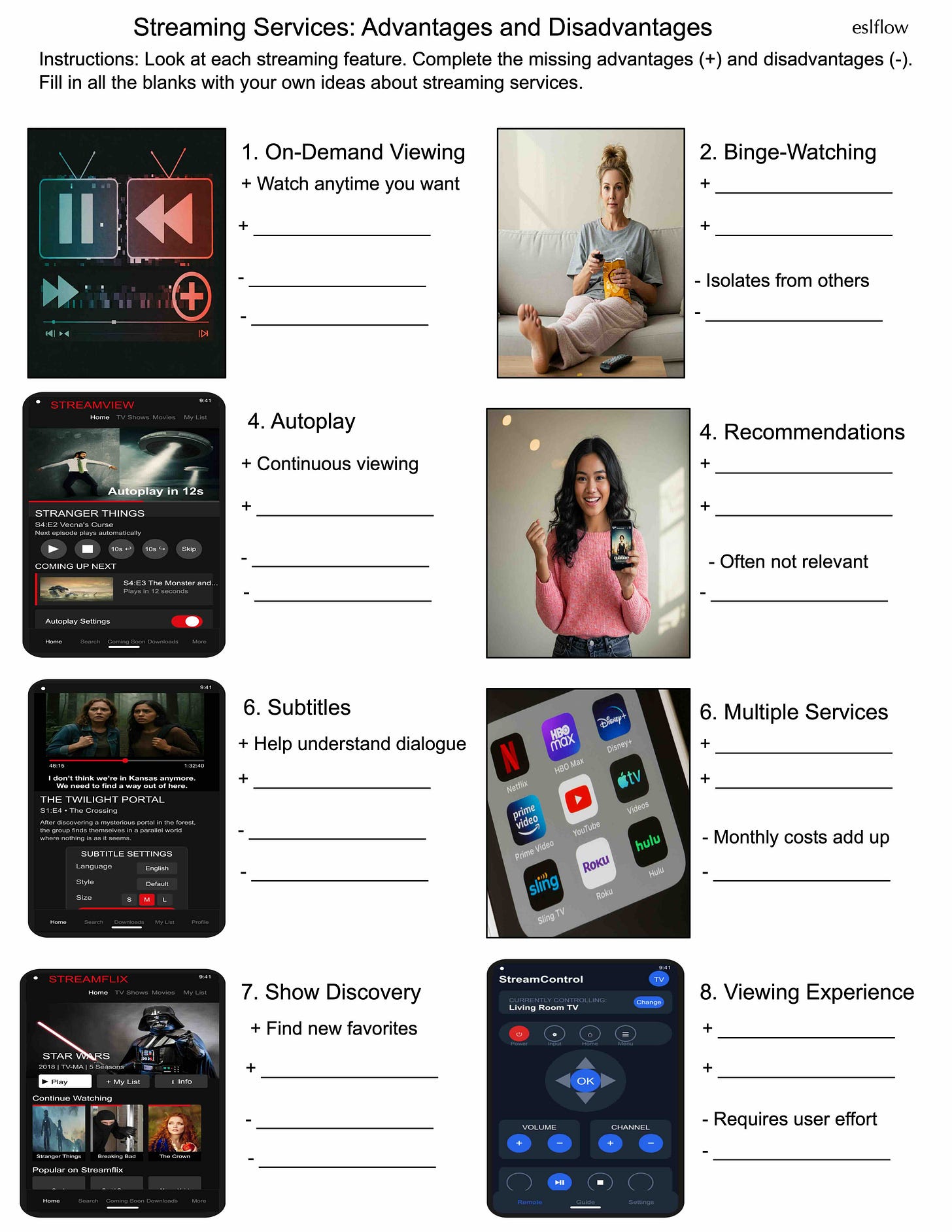The Language and Culture of Streaming
Media Literacy Skills for the Digital Entertainment Era
This post is another addition to the series of language lessons exploring the topics most relevant in the 2020s. It's a nice complement to previous posts about artificial intelligence, data literacy, and soft skills.
From binge-watching the latest series to discovering indie films from across the globe, streaming has fundamentally changed how we consume entertainment in the 2020s. This comprehensive set of exercises explores the language and cultural dimensions of streaming platforms that have become central to our daily lives. Through vocabulary building, realistic dialogues, and discussions about content choices, this resource helps English learners navigate the streaming landscape with confidence.
As platforms like Netflix, Disney+, HBO Max, and newer services like Apple TV+ and Paramount+ continue reshaping entertainment consumption patterns globally, mastering this digital entertainment vocabulary has become essential for cultural literacy and meaningful conversations in English. These skills empower learners to join global discussions about trending shows, participate in recommendations, and better understand cultural references that increasingly stem from streaming content.
Today’s Contents
Language Skills
Visual Vocabulary
Collocations
Vocabulary Review
Listening Exercises
Dialogue Between Friends (audio)
Streaming Customer Service Role Play (audio)
Critical Thinking Exercises
Streaming Content Choices
Streaming Platforms and Services
Streaming TV Habits
Advantages and Disadvantages
Communication Practice
TV and Movie Genres Questionnaire
Streaming Services Questionnaire
Expressing Opinions
Paid subscribers have access to download the complete materials at the end of the post.
Streaming Customer Service Role Play
This role-play consists of a typical conversation between a streaming service technical support agent and a frustrated customer. Students can listen to a dialogue and practice both sides of the dialogue, using phrases to troubleshoot common streaming problems like buffering, freezing, and other app issues. The exercise walks through a complete support interaction from initial greeting to resolution, covering technical steps like checking internet connections, restarting devices, clearing cache, updating apps, and adjusting quality settings. It includes a role play where students complete a customer-support dialogue using provided cues, a 10-question listening comprehension quiz to test understanding of technical instructions, and a gap-fill exercise focusing specifically on imperative verbs used in troubleshooting conversations.
Advantages and Disadvantages
Everyone uses streaming services, but how many people have really thought about their effects on daily life? This exercise helps students explore both the good and bad sides of modern streaming features. They'll think about things like watching shows whenever they want, bingeing entire seasons, and juggling multiple subscriptions. The activity includes visual representations of streaming interfaces to make the concepts more concrete and relatable. As learners fill in the advantages and disadvantages of each feature, they'll develop vocabulary for expressing pros and cons while gaining a more balanced understanding of how these services shape entertainment choices and viewing habits.
Collocations
Modern streaming has created its own vocabulary. This exercise focuses on the precise word combinations—collocations—that native English speakers use when discussing streaming platforms. Students practice phrases like "skip intros," "binge-watch shows," and "add to watchlist" through recognition, completion, and correction activities. The exercise highlights how these specialized phrases have become essential parts of everyday conversation about entertainment. Mastering these natural word pairings helps learners communicate fluently about digital entertainment experiences and sound more authentic when discussing streaming habits with native speakers.


